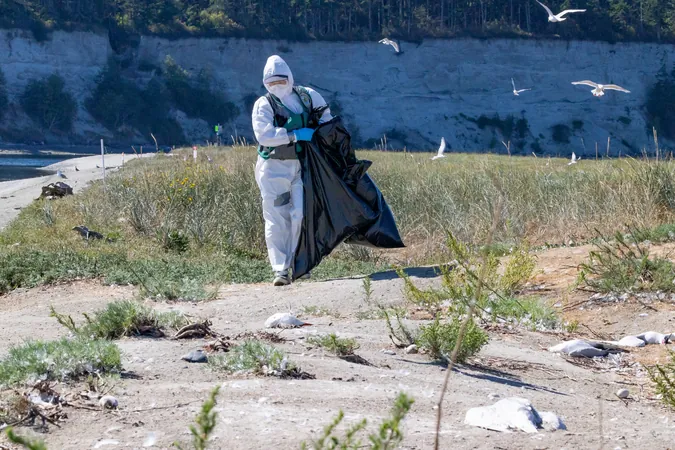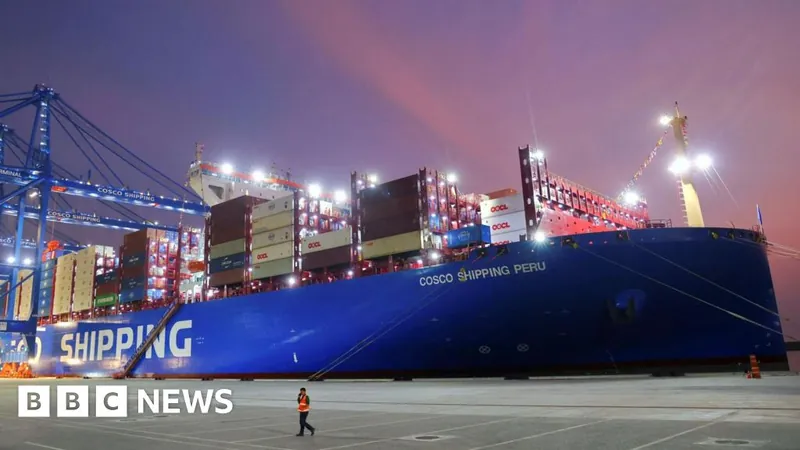
Tire Particles: The Hidden Environmental Menace You Never Knew Existed!
2024-11-13
Author: Benjamin
Introduction to Tire Particles (TPs)
A groundbreaking study from an international team of scientists has unveiled a shocking truth: tire particles (TPs) are now recognized as one of the biggest contributors to microplastic pollution, accounting for nearly a third of all microplastics found in our environment. This urgent research asserts that TPs should be classified as a distinct environmental threat due to their unique composition and the health risks they pose.
Composition and Environmental Impact of TPs
Unlike traditional microplastics, TPs originate from tires, which are composed of a complex mix of synthetic and natural materials, including toxic additives like heavy metals and polyaromatic hydrocarbons. As these tires wear down, the particles they release differ vastly in size, with some exceeding 5 mm, making them dispersed through ecosystems via wind and water runoff, and ultimately contaminating our waterways and food chains.
The Call for Research and Action
Henry Obanya from the Institute of Marine Sciences and the Revolution Plastics Institute at the University of Portsmouth has emphasized the necessity for specific, targeted research on TPs. "Tire particles may be classified as microplastics, but they house a cocktail of unknown chemicals that leach into the environment, raising serious health concerns,” he stated. Obanya and his team are calling for TPs to be recognized separately, pleading for a concerted effort to understand their environmental toxicity and movement.
Urgent Research Questions Identified
In their landmark publication in the journal *Environmental Research*, the researchers have identified a critical gap in our understanding of TPs and laid out ten urgent research questions across four vital themes: detection, chemical composition, biological impacts, and regulatory frameworks. An interdisciplinary group of experts from various countries, including the U.S., U.K., Norway, and China, has united to highlight these pressing needs, advocating for a standardized approach to manage and quantify TPs and their harmful leachates.
Real-World Consequences of TP Pollution
Alarmingly, studies have shown that the chemicals leaking from TPs are not just theoretical dangers; they have been detected in rivers worldwide, often linked to disturbing incidents like mass fish die-offs. For instance, the tire additive 6PPD and its breakdown product 6PPD-Q have been implicated in drastic declines in fish populations across North America.
Proposed Solutions and International Collaboration
To combat this emerging threat, researchers propose the establishment of an intergovernmental science-policy panel dedicated to addressing the global implications of these contaminants. They believe that creating clear classifications and robust regulatory measures could lead to sustainable practices in the tire and automotive industries, aligning with global Sustainable Development Goals.
A Call to Action from Scientists
"This is more than just an academic exercise; it’s a pivotal moment for international collaboration," Obanya stressed. By officially recognizing TPs as a noteworthy environmental concern, the scientific community can catalyze essential research and influence effective policy measures, ultimately paving the way for a healthier planet.
Next Steps in Research and Understanding
Dr. Farhan R. Khan, a senior researcher at the Norwegian Research Center (NORCE), pointed out, “This study not only compiles existing knowledge but provides a roadmap for the essential questions that need answering to mitigate the TP pollution crisis.” Similarly, Dr. Imari Walker-Franklin from RTI International echoed the sentiment that the findings present actionable steps for researchers, industry leaders, and regulators alike.
Conclusion: The Future of TP Pollution Awareness
As concerns over environmental pollution mount, Obanya is engaged in a crucial study examining how tire chemicals and particles impact marine life in U.K. waters, aiming to further unravel this pressing ecological dilemma.
This study opens the door to a global dialogue on a topic that has long been overlooked. Will the world act swiftly to address this toxic threat, or will tire particles continue to poison our ecosystems unnoticed? Stay tuned as we delve deeper into the urgent implications of tire pollution!









 Brasil (PT)
Brasil (PT)
 Canada (EN)
Canada (EN)
 Chile (ES)
Chile (ES)
 España (ES)
España (ES)
 France (FR)
France (FR)
 Hong Kong (EN)
Hong Kong (EN)
 Italia (IT)
Italia (IT)
 日本 (JA)
日本 (JA)
 Magyarország (HU)
Magyarország (HU)
 Norge (NO)
Norge (NO)
 Polska (PL)
Polska (PL)
 Schweiz (DE)
Schweiz (DE)
 Singapore (EN)
Singapore (EN)
 Sverige (SV)
Sverige (SV)
 Suomi (FI)
Suomi (FI)
 Türkiye (TR)
Türkiye (TR)